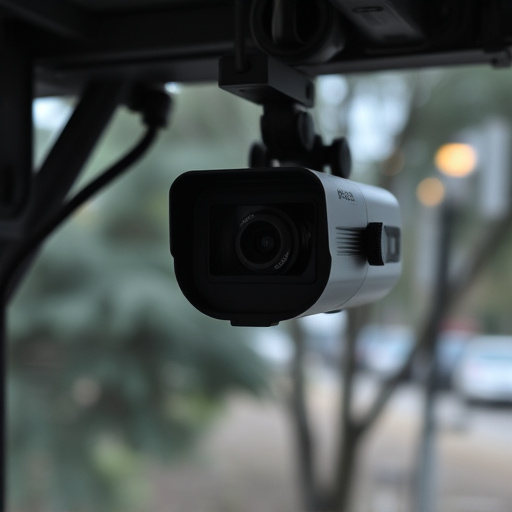Detecting spy cameras has evolved with light reflection techniques, providing a non-invasive method to uncover hidden devices by analyzing optical patterns. Unlike battery life comparisons that focus on camera performance, this approach leverages environmental conditions for proactive privacy protection. Understanding optics is key to interpreting reflections, making it a valuable tool against covert surveillance. When selecting spy cameras, prioritizing models with long battery life ensures continuous monitoring without sacrificing discretion. This method offers a significant advantage over traditional techniques by minimizing battery drainage, making it ideal for detecting miniature cameras designed for extended discreet use.
Uncover the advanced world of spy camera detection with our comprehensive guide. Explore the innovative light reflection technique, a game-changer in identifying hidden cameras. We delve into the science behind it, understanding how light interacts to reveal stealthy surveillance. This article compares various detection methods, highlighting the significance of battery life in spy camera discretion. Discover the latest advancements and learn what professionals use for effective, discreet operations, ensuring peace of mind in today’s digital era.
- Understanding Light Reflection and Spy Camera Detection
- The Impact of Battery Life on Spy Camera Discretion
- Comparatively Analyzing Spy Camera Detection Techniques
Understanding Light Reflection and Spy Camera Detection
Light reflection plays a pivotal role in spy camera detection, offering a subtle yet effective method to uncover hidden cameras. When light encounters a reflective surface, it bounces back, creating a pattern that can be analyzed. In the context of spy cameras, this natural phenomenon is harnessed to reveal their presence. By strategically placing lights or using existing lighting sources and observing reflections, individuals can detect tiny camera lenses or sensors that might be concealed in various objects.
In the battle against covert surveillance, understanding light reflection dynamics is crucial. Unlike battery life and spy camera comparison aspects, which focus on performance metrics, this technique leverages environmental factors. It’s a proactive approach that empowers users to identify potential privacy threats, ensuring a more secure environment. The subtle art of reading light reflections requires keen observation and an understanding of how light interacts with different surfaces, making it a valuable tool in the modern fight against hidden cameras.
The Impact of Battery Life on Spy Camera Discretion
The duration of a spy camera’s battery life plays a significant role in its overall discretion and effectiveness. When comparing different models, one key aspect to consider is how long each camera can operate undetected before requiring a recharge. Longer battery life allows for more extended periods of surveillance, making it ideal for applications that demand continuous monitoring. For instance, a spy camera with an extended battery life can remain hidden in a room or outdoors for several days, providing valuable footage without the need for frequent intervention.
In contrast, cameras with shorter battery lifespans may only last a few hours or even minutes between charges, limiting their usability. This is particularly important when placing these devices in hard-to-reach areas or where power outlets are inaccessible. To ensure maximum discretion, users should opt for models boasting impressive battery capabilities, enabling them to capture evidence discreetly and efficiently without worrying about premature battery drainage.
Comparatively Analyzing Spy Camera Detection Techniques
In the realm of spy camera detection, various techniques have emerged, each with its strengths and weaknesses. One innovative method gaining traction is the light reflection technique, which analyzes subtle changes in light patterns to identify hidden cameras. This approach offers a unique advantage over traditional methods like visual inspection or infrared sensing by focusing on the invisible—light waves themselves. By casting specific angles of light and observing the reflections, individuals can uncover devices like miniature spy cameras, especially those with low-power LEDs, which often go unnoticed due to their limited battery life.
Comparatively, the light reflection technique stands out in terms of its ability to detect hard-to-spot devices. Unlike battery-draining continuous operations required by some methods, this approach minimizes energy consumption, ensuring extended battery life for spy cameras. This is a significant consideration when dealing with covert surveillance equipment that might need to operate discreetly over an extended period. As such, the light reflection method represents a game-changer in the spy camera detection landscape, offering both precision and energy efficiency.
In conclusion, the detection of spy cameras has evolved significantly, with light reflection techniques proving effective against discreet devices. This article explored the science behind light reflection and its application in identifying hidden cameras, highlighting the importance of battery life as a factor in maintaining discretion. Through a comparative analysis, we’ve seen that no single method is universally superior; each has its strengths and weaknesses. Understanding these techniques empowers individuals to protect their privacy, especially in today’s digital world where spy camera technology continues to advance. A keen eye for detail and knowledge of these detection methods can go a long way in safeguarding personal spaces from unwanted surveillance.
